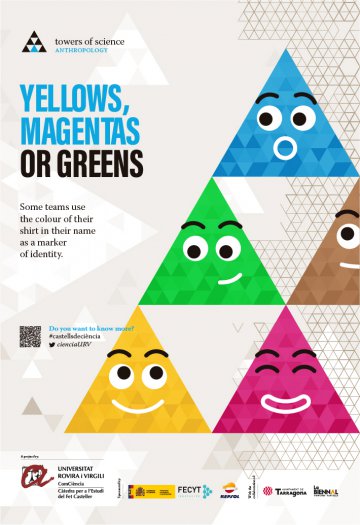
Elisa Alegre
Researcher in the Department of Anthropology, Philosophy and Social Work at the URV.
 For anyone who has heard of human towers but never seen them, attending a live performance awakens numerous previously unexperienced emotions and sensations.
For anyone who has heard of human towers but never seen them, attending a live performance awakens numerous previously unexperienced emotions and sensations.
Ethnography is an anthropological research method that seeks to describe, interpret and explain the reasons for the behaviour of human groups, societies, communities, and even individuals. It attempts to shed light on the system of values and beliefs, and the logic behind cultural phenomena, and to place these phenomena in social contexts. Anthropologist Susan DiGiacomo explained that ethnographies arise from detecting and attempting to unravel the fabric of a cultural paradox.
We almost always find something paradoxical, even contradictory, in human behaviour. Cultural phenomena are not always the product of so-called common sense, since very often the things that happen do not come directly out of the social contract or our agreement of what we believe to be rational or normal. This may be the first feeling that seeing human towers inspires in us.
Looking for the reasons behind symbolic issues prompts us to go far beyond, for example, what is logical and material and to delve into visceralities and emotions that involve identity and all communal things. This is the case of human towers.
From the very first moment we see human towers, we question the phenomenon of bodies adopting the form of a tower, which makes no sense if we try to explain it from the logic of what we have referred to as the survival instinct ever since the origins of human history. Do these towers endanger the lives of people and small children with scant respect for the primitive instinct of staying alive?
The gralles start to play and a mass of people begin to climb, a tangle of arms and legs, a pile of bodies with no apparent logic or structure. Discerning the architecture and order of a human tower is by no means easy for the neophyte.
 At first glance, tower building may recall the images of exotic and far-flung tribes who shin up palm trees with skill and dexterity, in what seems to be an almost natural activity, albeit complex. What is most surprising is that there is no specific purpose. If the purpose of shinning up palm trees is to collect coconuts for food, an instinctive action, what purpose do these people have? How can they justify climbing up the tower if by so doing they put their lives at risk?
At first glance, tower building may recall the images of exotic and far-flung tribes who shin up palm trees with skill and dexterity, in what seems to be an almost natural activity, albeit complex. What is most surprising is that there is no specific purpose. If the purpose of shinning up palm trees is to collect coconuts for food, an instinctive action, what purpose do these people have? How can they justify climbing up the tower if by so doing they put their lives at risk?
Identity versus survival: shirts and identification
This is the first paradox. The object or the purpose cannot be explained in terms of simple physical exercise, or material gain, since the tower builders do not get paid for what they do (in money or in kind). Marvin Harris, a material anthropologist, would have tried to find what reward encouraged this closely knit group to make their children climb to the highest point of the tower. However, this reward is far from material.
The shirts represent each of the teams and provide the first clues, because the colours in themselves are a symbolic element that identifies the group, the community. In the chapter "Who needs identity?" of his book Qüestions d'identitat cultural, Stuart Hall argues that humans need to identify with something. He deconstructs the idea of an integral, original and unified identity. This would explain why an aspect of identity can even go against the idea of survival, a supposed universal human sentiment. Is it a paradox between the need for identity as identification and the need to survive?
What human tower building gives to those who practice it is a strong sense of belonging that constructs not only collective identities but also a subjective, individual identity. We cannot engage here in a debate on how the subject is constructed, but we can recognize the maxim of identity as the fundamental driving force of communal actions, almost as a total social fact. To identify oneself as a tower builder belonging to a particular team is a collective and community support to one's own individual identity. In fact, some people introduce themselves to others at social events as tower builders, above and beyond their other assigned social roles such as mother, father, artist, teacher, athlete, woman.
Is it possible to use a shirt to explain the paradox between survival and identity? The answer to this question is a complex one, but we enter the world of metaphors and we explore the world of tower building from another paradigm that enables us to break away from socially expected human behaviour. Identity may give us greater insight into the phenomenon.
